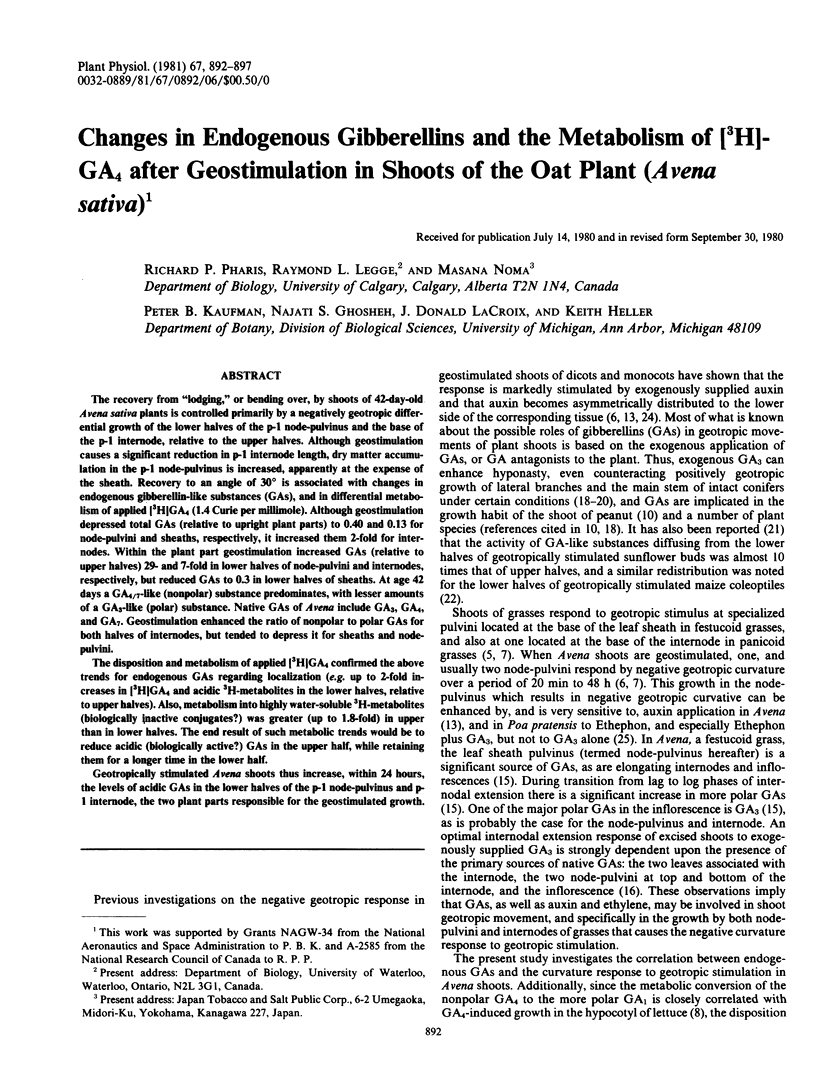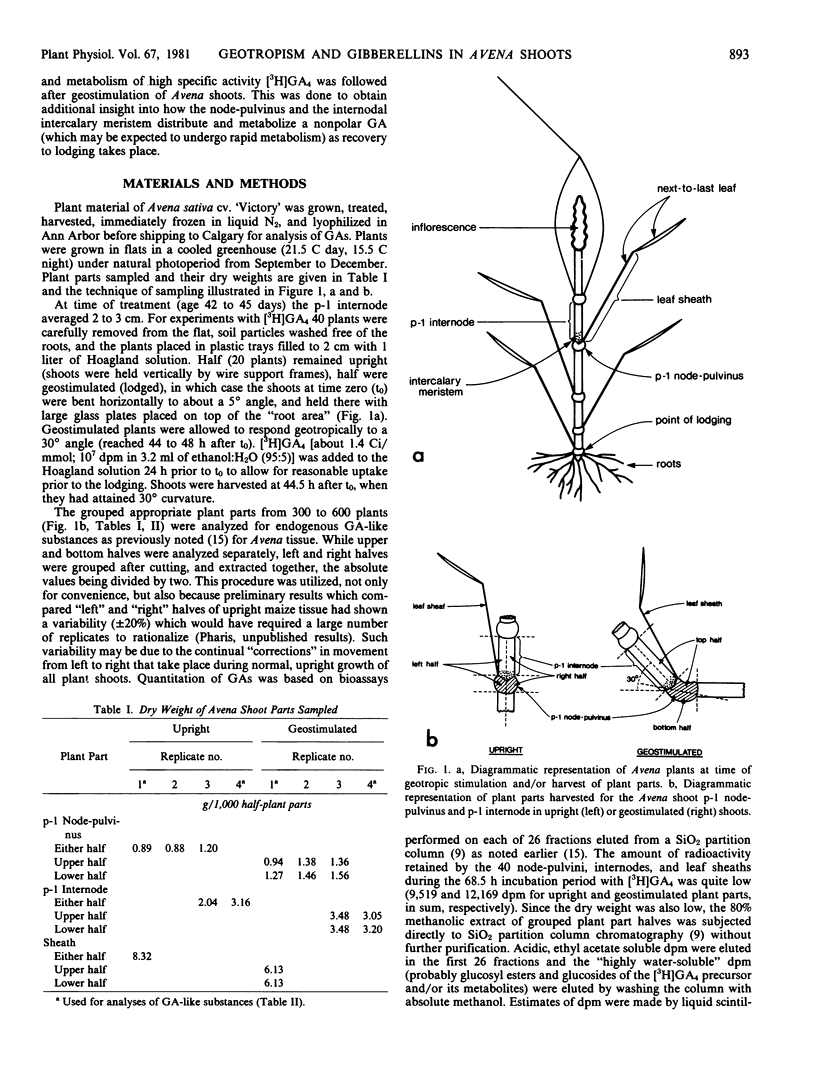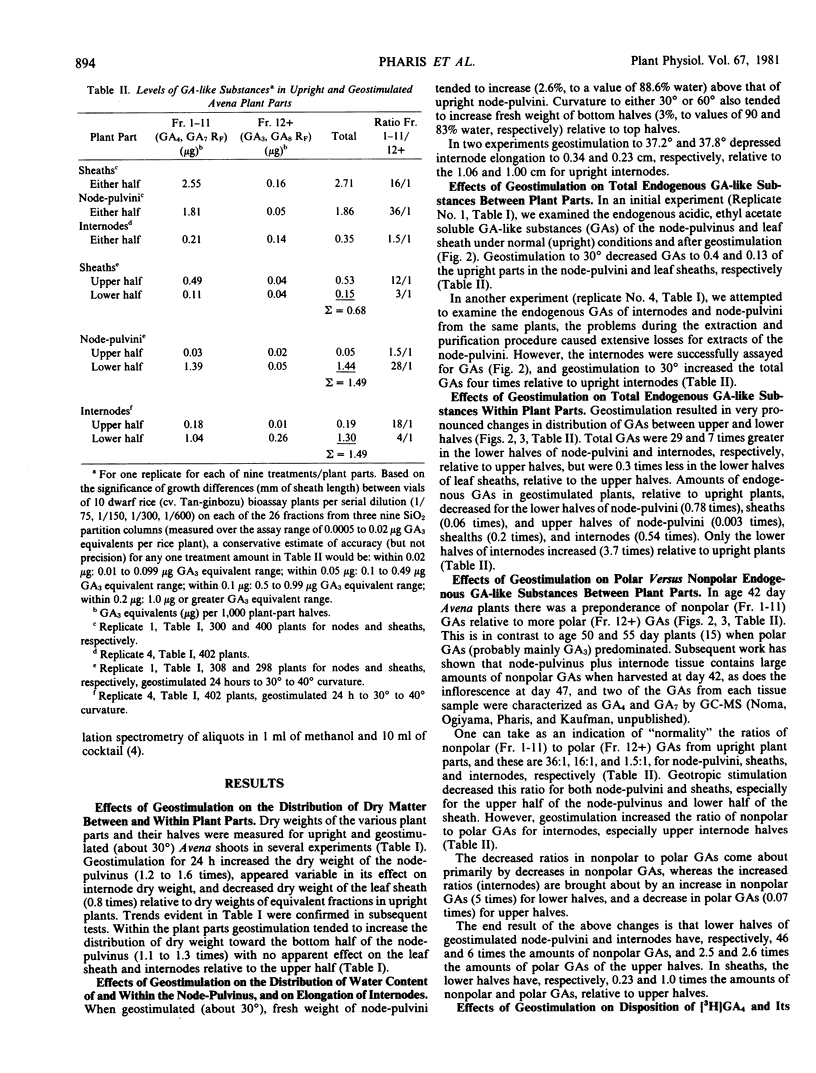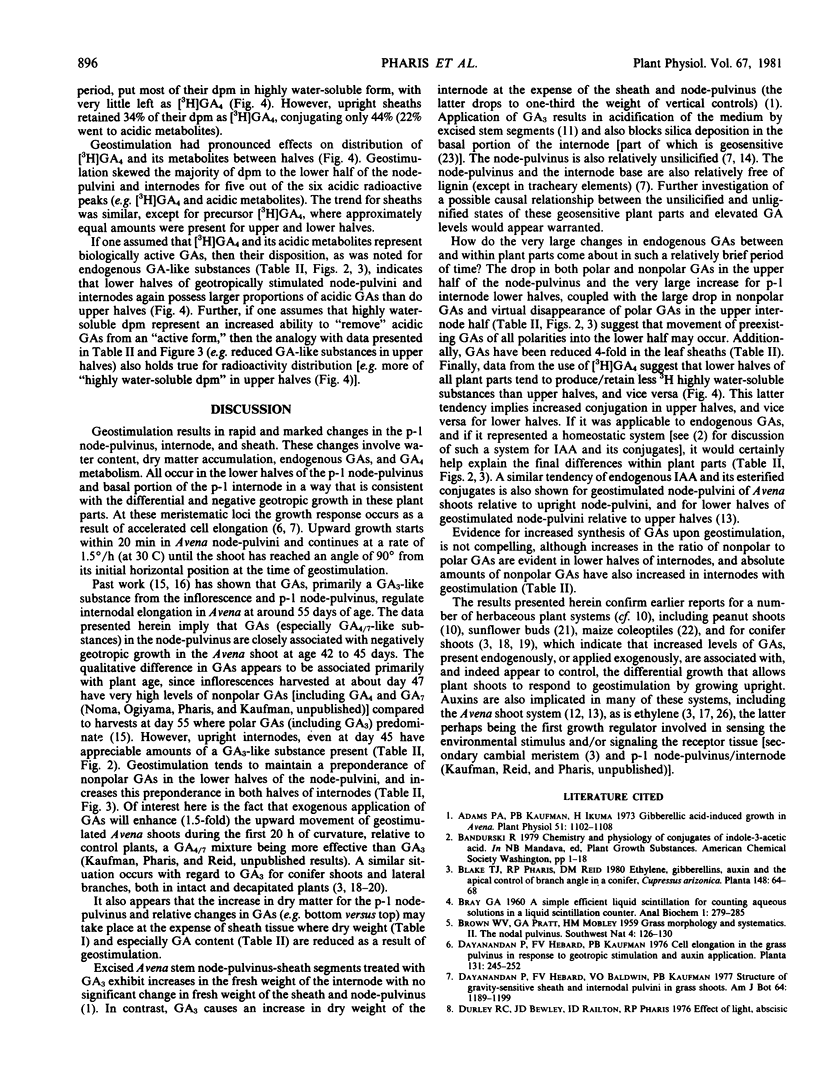Abstract
The recovery from “lodging,” or bending over, by shoots of 42-day-old Avena sativa plants is controlled primarily by a negatively geotropic differential growth of the lower halves of the p-1 node-pulvinus and the base of the p-1 internode, relative to the upper halves. Although geostimulation causes a significant reduction in p-1 internode length, dry matter accumulation in the p-1 node-pulvinus is increased, apparently at the expense of the sheath. Recovery to an angle of 30° is associated with changes in endogenous gibberellin-like substances (GAs), and in differential metabolism of applied [3H]GA4 (1.4 Curie per millimole). Although geostimulation depressed total GAs (relative to upright plant parts) to 0.40 and 0.13 for node-pulvini and sheaths, respectively, it increased them 2-fold for internodes. Within the plant part geostimulation increased GAs (relative to upper halves) 29- and 7-fold in lower halves of node-pulvini and internodes, respectively, but reduced GAs to 0.3 in lower halves of sheaths. At age 42 days a GA4/7-like (nonpolar) substance predominates, with lesser amounts of a GA3-like (polar) substance. Native GAs of Avena include GA3, GA4, and GA7. Geostimulation enhanced the ratio of nonpolar to polar GAs for both halves of internodes, but tended to depress it for sheaths and nodepulvini.
The disposition and metabolism of applied [3H]GA4 confirmed the above trends for endogenous GAs regarding localization (e.g. up to 2-fold increases in [3H]GA4 and acidic 3H-metabolites in the lower halves, relative to upper halves). Also, metabolism into highly water-soluble 3H-metabolites (biologically inactive conjugates?) was greater (up to 1.8-fold) in upper than in lower halves. The end result of such metabolic trends would be to reduce acidic (biologically active?) GAs in the upper half, while retaining them for a longer time in the lower half.
Geotropically stimulated Avena shoots thus increase, within 24 hours, the levels of acidic GAs in the lower halves of the p-1 node-pulvinus and p-1 internode, the two plant parts responsible for the geostimulated growth.
Full text
PDF





Selected References
These references are in PubMed. This may not be the complete list of references from this article.
- Adams P. A., Kaufman P. B., Ikuma H. Effects of gibberellic Acid and sucrose on the growth of oat (Avena) stem segments. Plant Physiol. 1973 Jun;51(6):1102–1108. doi: 10.1104/pp.51.6.1102. [DOI] [PMC free article] [PubMed] [Google Scholar]
- Durley R. C., Bewley J. D., Railton I. D., Pharis R. P. Effects of Light, Abscisic Acid, and N-Benzyladenine on the Metabolism of [H]Gibberellin A(4) in Seeds and Seedlings of Lettuce, cv. Grand Rapids. Plant Physiol. 1976 May;57(5):699–703. doi: 10.1104/pp.57.5.699. [DOI] [PMC free article] [PubMed] [Google Scholar]
- Hebard F. V., Amatangelo S. J., Dayanandan P., Kaufman P. B. Studies on acidification of media by Avena stem segments in the presence and absence of gibberellic Acid. Plant Physiol. 1976 Nov;58(5):670–674. doi: 10.1104/pp.58.5.670. [DOI] [PMC free article] [PubMed] [Google Scholar]
- Kaufman P. B., Ghosheh N. S., Nakosteen L. Analysis of native gibberellins in the internode, nodes, leaves, and inflorescence of developing Avena plants. Plant Physiol. 1976 Aug;58(2):131–134. doi: 10.1104/pp.58.2.131. [DOI] [PMC free article] [PubMed] [Google Scholar]
- de la Roche A. I. Increase in linolenic Acid is not a prerequisite for development of freezing tolerance in wheat. Plant Physiol. 1979 Jan;63(1):5–8. doi: 10.1104/pp.63.1.5. [DOI] [PMC free article] [PubMed] [Google Scholar]


